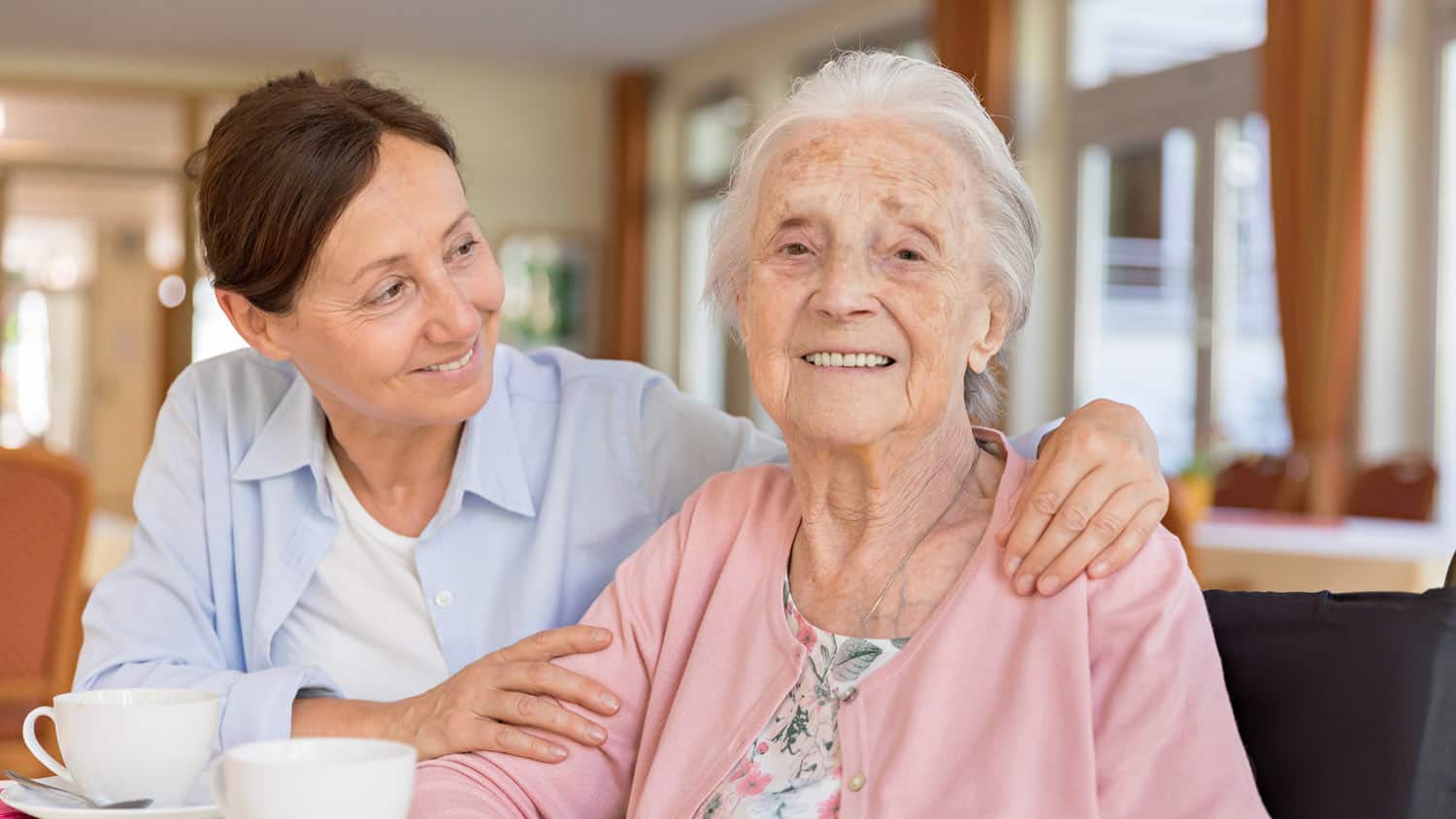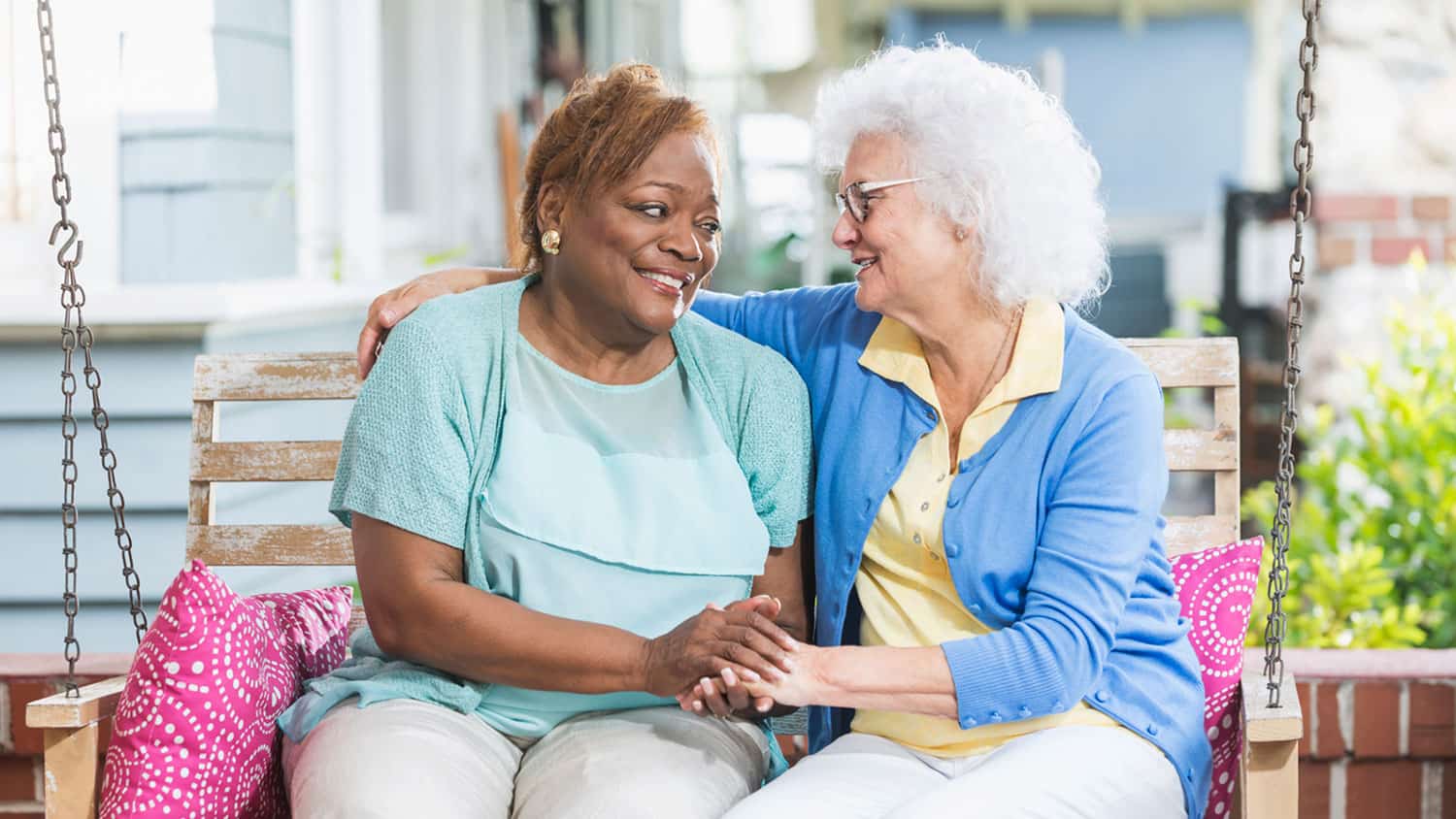
Preventing Aches and Pains: 6 Ways to Make Caregiving Easier on Your Body
So much attention gets paid to the stress and emotional toll caregiving can take, but what about the physical side?
Family caregivers develop musculoskeletal injuries at alarming rates because of the physical exertion required to take care of someone else.
If you are a family caregiver who helps care for a spouse or aging parent, you may be in a position where you have to physically assist them – whether it’s with getting them up from a chair, getting them into the shower, transferring them in and out of the car, or helping them up after a fall.
Common Caregiver Injuries
Research has shown that caregivers commonly experience physical injuries due to lifting, transferring, and repositioning loved ones as well as from poor sleep and lifestyle habits that occur as a result of caregiving, i.e., insomnia, not exercising, etc.
Lower Back
The lumbar spine region often falls victim to the heavy lifting and awkward postural positions caregiving can require. Strained muscles can become inflamed and lead to pain, aching, and stiffness.
Upper Back
The upper back consists of the upper spine, shoulders, and neck. Injuries to the soft tissues and joints in the upper back can lead to pain from the neck to the shoulders all the way down to the arm and hand.
Wrists and Hands
Constant use of the hands and wrists in physically caring for a loved one can result in natural wear and tear as well as acute injuries like tendonitis.
Caregivers may also experience lower body injuries in the hips, knees, and feet that are exacerbated by common caregiving duties.
Preventing Caregiver Injuries
The more your loved one can do for themselves, the less you have to do for them. Plus, the practice in independence can be a boost to their confidence and sense of self-reliance. Limiting the weight you lift or simply the sheer amount of things you have to do starts with the right tools.
Install Grab Bars
In environments like staircases and bathrooms, extra grab bars and railings on the wall can help your loved one better support their weight and balance to remain stable without excessively relying on you.
Give Them Ease-of-Use Tools
Basic aids like reacher-grabbers, button hooks, and shoehorns can help your loved one get dressed on their own as well as safely pick up items they have trouble reaching without having to call on you.
Try Car Transfer Aids
For loved ones with mobility issues that have them using a walker, cane, or wheelchair, getting in and out of the car may be made simple with car transfer aids like car caddies, handy bars, and swivel seats.
Build Up Your Back and Core
If you have gone to your doctor complaining about back pain, there is a good chance they have recommended that you work on strengthening your back and core muscles. Easier said than done, right?
While finding time and energy may be difficult as a caregiver, physical fitness does play one of the most important roles in preventing common aches and pain.
If you are unable to get to the gym or even outside for a daily walk, try home workout ideas for caregivers like resistance band training, streaming free yoga or bodyweight exercises on Youtube, or sitting on a stability ball while you tend to tasks like folding laundry or sorting mail.
Learn Proper Technique
Did you know that the first thing you do when a loved one falls is not to help them up right away? So many caregivers quickly scramble to lift their loved one off the ground that they end up pulling their back and endangering both themselves and their caree.
When it comes to helping someone up from the ground, off the bed, or up from a chair, there are recommended techniques that ensure you are employing proper body mechanics to avoid injury.
You can learn these from professional caregivers themselves, like nurses, so ask the next time you take your loved one to the doctor or contact your local Council on Aging to see if they have caregiver resources to help teach you.
Managing Caregiver Injuries
If you are already dealing with back or neck pain as a result of caregiving, you may be able to manage symptoms naturally with treatment methods like using a cold compress or heat pad, getting a massage, applying a topical analgesic cream or salve, or getting a chiropractic adjustment.
Continuing the same caregiving behaviors, however, may only result in prolonged chronic pain that effectively limits how much you are able to do as a caregiver.
What kind of physical demands do you face as a caregiver? Have you physically hurt yourself while caregiving? Do you have tips for addressing the physical demands of caregiving? Please share your experience with our community!
Disclaimer: This article is not intended to provide medical advice. Please consult with your doctor to get specific medical advice for your situation.







This was a good read and makes me feel like I’m not alone!
I am my 14yr old sons full-time caregiver. He is fully dependent in all aspects of life, wheelchair bound and is medically fragile. As he gets older he’s grown in to a whopping 110lbs and I wish I would have taken better care of myself and hope to moving forward!
Being diagnosed with on-site arthritis in my hips and torn tendons in my forearms, it has not been an easy task. I have to keep going every day no matter what as he needs me most. With that being said I do understand I am number 1 and without me in good health I couldn’t keep going like this at 40!
Anyways, thanks for the good information;)